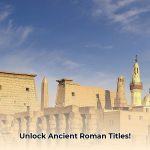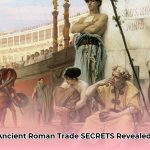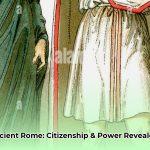Beyond the legions, emperors, and gladiatorial arenas, ancient Rome harbored a secret world. It was a realm teeming with fantastical creatures – beings that stirred the imagination, embodied profound fears, or even offered comforting, divine protection within the humblest of homes. These weren’t mere figments of fancy; the ancient Roman mythological creatures were integral to the Roman worldview, reflecting their deepest values, anxieties, and aspirations. They served as a vibrant lens through which Romans understood their universe, their place within it, and the moral lessons that guided their lives. Looking for more? Explore Roman lore here. Learn about them here, through a comprehensive list.
Prepare to journey into this captivating domain, where we will uncover:
- How Roman culture masterfully wove together inherited Greek myths with its own unique Italic traditions, forging a distinct mythological identity.
- The astonishing diversity of these creatures, spanning everything from fearsome, chaos-incarnate monsters to serene, protective household spirits.
- The profound and multifaceted influence these mythological entities exerted on Roman society, religion, arts, and their lasting resonance in the contemporary world.
Hybrid Horrors and Human Nature: Exploring Roman Composite Creatures
The Roman imagination, much like its Greek predecessors, delighted in combining disparate forms to create creatures of symbolic import. The Centaur, a majestic fusion of human and horse, galloped straight from Greek legend into Roman lore. While often associated with wild, untamed nature and unruly behavior, some, like the wise Chiron, stood as revered teachers, embodying the potential for rationality to temper primal instincts. This duality fascinated the Romans, mirroring the constant push and pull within human nature.
Yet, the Roman penchant for hybridity didn’t stop there. Tales circulated of the Onocentaur, a more peculiar blend of human upper body and donkey lower half, suggesting a fascination with the grotesque and a playful subversion of the familiar. The formidable Chimera, with its lion’s head, goat’s body, and serpent’s tail, represented unbridled chaos and the formidable challenges heroes faced. These composite beings weren’t just fantastical; they explored the blurred boundaries between civilization and wilderness, and the complex interplay between human consciousness and the animal kingdom, often serving to explain the unpredictable or the inexplicable in their world.
Heavenly House Guests: The Lares, Penates, and Manes
Not all ancient Roman mythological creatures were terrifying beasts designed to inspire dread. Many were benevolent entities, unseen protectors deeply woven into the fabric of daily Roman life. The Lares, for instance, were sacred household guardian spirits, believed to safeguard the home, crossroads, and even the state itself. Every Roman family maintained a special shrine, known as a lararium, where daily offerings and prayers were meticulously performed to honor their Lares, ensuring domestic harmony and fostering prosperity. These were the original divine home security systems, ensuring peace and abundance.
Similarly, the Penates were revered deities of the pantry and household provisions, ensuring the family’s sustenance and overall well-being. Their presence underscored the vital importance of food security and the abundance of the home. The Manes, on the other hand, were the revered spirits of ancestors. Often benevolent, their contentment was deemed crucial for a family’s fortunes, highlighting the profound respect Romans held for those who came before them and the enduring connection believed to exist between the living and the dead. This deep reverence for ancestral spirits was a cornerstone of Roman piety, emphasizing continuity and familial duty.
Shades and Shadows: The Malevolent Spirits of Roman Lore
Of course, the Roman world was not without its darker corners, where truly spooky characters lurked, inspiring fear and caution. The Strix, for example, was a chilling nocturnal creature, often depicted as a bird-woman with a thirst for blood, preying specifically upon unattended infants. Imagine the pervasive fear such tales instilled in parents across ancient Rome, urging constant vigilance.
Then there were the Lemures, also known as Larvae—restless, malevolent spirits of the dead. These were the tormented specters of those who had met unfortunate ends or had received improper burials, haunting the shadows with unresolved grievances and a decidedly bad attitude. Their presence often necessitated complex appeasement rituals during the annual Lemuria festival to prevent misfortune and ward off their malevolent influence. Such creatures vividly underscore the Roman awareness of life’s darker aspects, particularly the mysterious realm of death and the profound importance of proper funerary rites to ensure peace for both the living and the deceased.
Monsters from the Margins: Pliny’s Compendium of Wonders and Terrors
Pliny the Elder, a renowned Roman author, naturalist, and military commander, meticulously documented the natural world in his seminal work, Natural History. Yet, amidst his scientific observations, he included accounts of bizarre “monstrous races” and fantastical creatures supposedly inhabiting the far-flung corners of the known world. Tales of the Basilisk, a serpentine king whose mere gaze or breath could kill, the elusive Monoceros (a fierce, multi-limbed creature often confused with the modern unicorn), and the odd Amphisbaena (a snake with a head at both ends) filled his pages.
Some historians suggest these accounts were based on real, albeit misinterpreted, encounters with unfamiliar cultures and animals, while others argue they were simply exaggerated stories, fueled by the era’s limited geographical knowledge and perhaps a touch of xenophobia towards distant peoples. Pliny himself, though generally diligent, was sometimes an uncritical compiler of lore. Regardless, these monstrous descriptions, detailed by Pliny and echoed by poets like Ovid and Lucan, fueled the Roman imagination, populating the unknown with terrifying but fascinating entities that served as both warnings and wonders.
Weaving the Tapestry: The Influence of Greek and Italic Traditions
The Roman mythological landscape was not solely of their own invention. Their mythology is a magnificent testament to cultural exchange and adaptation, primarily influenced by the more established traditions of ancient Greece, yet distinctly shaped by native Italic folklore. The synthesis of these two powerful currents created a unique mythological identity for Rome.
From Pantheon to Political Philosophy: Reshaping Greek Deities
The Roman embrace of Greek mythology was far from a passive absorption; it was a deliberate and strategic reimagining, transforming borrowed narratives into something profoundly Roman. The most apparent change was the renaming of deities: Zeus became mighty Jupiter, Hera transformed into the revered Juno, and Poseidon was re-branded as powerful Neptune. However, the adaptation went far beyond mere nomenclature. The personalities and fundamental roles of these gods evolved dramatically to align with Roman values. Jupiter, for example, wasn’t merely the king of the gods; he became a potent symbol of Roman authority, divine sanction for their burgeoning empire, and the embodiment of civic order. Juno shifted from a notoriously jealous wife to a revered protector of Roman women, marriage, and the entire state itself.
While Greek myths often reveled in the glory of individual heroism and personal achievement, Roman mythology reshaped these narratives to emphasize pietas (duty, piety, devotion to family, state, and gods), fides (loyalty, trustworthiness), and dedicated service to the state. The narrative focus subtly shifted from personal glory to the overarching “greater good” of Rome. Consider Hercules: in Roman interpretations, his legendary labors weren’t just feats of strength; they transformed into enduring acts of valorous service to the Roman state, establishing him as a model citizen embodying quintessential Roman virtues. This strategic adaptation allowed Rome to inherit a rich mythological framework while firmly embedding its own distinct cultural values within it.
Indigenous Roots: The Contributions of Italic Folklore
Beyond Greek influences, Rome’s original mythological creatures also drew from Indigenous Italic cultures, such as the Etruscans and various Latium tribes. These pre-Roman traditions featured unique beings and beliefs that were subtly interwoven with Roman state religion and practices, evolving distinctly from their Greek counterparts. The emphasis on household spirits like the Lares and Penates, while having parallels, took on a uniquely Roman significance, deeply rooted in the importance of the family unit and the home as the core of society. This native folklore provided a powerful undercurrent, grounding the more widespread Hellenic myths in the specific land and traditions of Italy.
Why Emperors Were Obsessed with Divine Connections
The enduring question of why emperors were so obsessed with deities is not merely a matter of personal faith, but a masterstroke of political pragmatism. Roman emperors, from the legendary founder Romulus (son of Mars) to the masterful Augustus, meticulously intertwined their personal power with divine status. It was an ancient form of strategic rebranding, expertly tapping into the existing religious fervor of the populace to solidify and legitimize their authority. Projecting an image of quasi-divinity was an undeniable stroke of political genius, ensuring widespread public deference and loyalty.
The Divine Right to Rule: Emperors and the Pantheon
The Roman pantheon, teeming with familiar, powerful figures like Jupiter and Venus, became a grand stage for imperial propaganda. By meticulously associating themselves with these formidable deities or claiming direct divine lineage (as many emperors did), emperors effectively asserted a divinely ordained right to rule. This profound connection was not merely symbolic; it was meticulously woven into state-sponsored rituals, monumental public architecture, and celebratory art, constantly reinforcing the emperor’s quasi-divine status and fostering widespread societal unity. The very acts of worship through the Imperial Cult served to reinforce the emperor’s supreme authority, subtly reminding everyone of their place within the grand Roman order.
Challenges to the Cult and a Shifting Landscape
However, this meticulously crafted system was not without its inherent vulnerabilities. Philosophers and, most notably, early Christians were far from enthusiastic about the concept of emperor worship. They viewed it as idolatry, a profound betrayal of true faith and spiritual principles. The burgeoning rise of Christianity presented a significant, existential challenge to traditional Roman polytheism and the very foundation of the Imperial Cult. As more individuals converted to the monotheistic Christian faith, the emperor’s divine aura, so carefully cultivated, inevitably began to diminish, challenging the very source of imperial legitimacy. This profound shift triggered a fundamental reevaluation of power, the nature of divinity, and the essence of personal belief within the empire, playing a significant role in its later transformations.
The Enduring Echoes: Roman Creatures in Modern Culture
So, why should these ancient Roman mythological creatures captivate us today? Because their influence far transcends the boundaries of the Roman Empire, their essence continuing to permeate modern storytelling, art, and even our understanding of ourselves. These mythological beings constantly reappear in movies, TV shows, video games, and literature, often creatively reimagined for contemporary audiences. From the labyrinthine horrors in fantasy novels to the protective spirits invoked in modern rituals, the archetypes persist. Artists worldwide still draw profound inspiration from them, crafting stunning works that capture their timeless power and mystique, demonstrating the enduring human fascination with the unknown and the symbolic.
Ultimately, these Roman myths serve as a powerful reflection of how ancient narratives shaped cultural identities and continue to resonate in the stories we share today. Their enduring impact lies in their capacity to exemplify the values, fears, and beliefs of the Roman populace, functioning as potent symbols of Roman identity and molding the way Romans perceived their world and their position within it. By delving into these ancient narratives, we unlock a profound understanding of our own cultural roots and the narratives that still shape us.
Key Players of Roman Mythology: A Snapshot of Significance
| Creature Type / Entity | Description | Cultural Significance |
|---|---|---|
| Lares | Benevolent household guardian spirits, often depicted as youthful figures. | Ensured domestic harmony and family prosperity; deeply integrated into daily Roman life through lararia (shrines). |
| Minotaur | A monstrous creature, famously half-man and half-bull, residing in a labyrinth. | Symbolized the savage, untamed aspects of nature and the perpetual struggle between civilized order and barbarity. |
| Fauns | Mischievous woodland spirits, often depicted with goat-like features; associated with fertility. | Personified the wild, unpredictable, and often playful aspects of nature; linked to agricultural bounty. |
| Charon | The grim ferryman who transported the souls of the deceased across the river Styx or Acheron. | Reflected Roman anxieties about mortality, the afterlife, and the critical necessity of proper burial rites and payment. |
| Basilisk | A serpent-like creature, often crowned, whose gaze or breath was believed to be instantly deadly. | Embodied ultimate terror and the power of the unknown; a formidable symbol of destruction and untamed danger. |
| Nymphs | Graceful female spirits associated with various natural elements (rivers, forests, springs, mountains). | Embodied nature’s beauty and fertility, symbolizing the profound connection Romans felt to their environment and its life-giving forces. |
| Strix | A nocturnal bird-like creature, often associated with witches, said to prey on children. | Represented fears of the night, unknown dangers, and malevolent magic; a cautionary figure in folklore. |
| Cacus | A fire-breathing giant and son of Vulcan, notorious for theft and violence. | A personification of localized evil and chaos, whose eventual defeat by Hercules underscored heroic virtue and the establishment of order. |
| Lemures / Larvae | Restless, malevolent spirits of the unburied or vengeful dead. | Highlighted fears of improper burial and unfinished business, necessitating appeasement rituals to prevent misfortune. |
These creatures, and the rich mythological tapestry they inhabit, offer invaluable insights for various sectors today:
- Educators and Researchers: Engaging with these myths enables deeper studies combining Roman history, art, and societal values, fostering interdisciplinary understanding. This contributes to the development of comprehensive digital resources, preserving and making Roman mythological creatures accessible for future generations.
- Creative Industries: These richly detailed beings provide fertile ground for new narratives, enhancing films, literary works, video games, and digital media. Collaboration between historians, myth experts, and creative groups ensures accuracy and depth in modern portrayals, leading to more compelling and culturally authentic content.
- Cultural Organizations: Curating exhibits and educational programs focused on Roman mythological creatures can significantly enrich public understanding of ancient cultures. Partnering with international organizations to compare mythologies fosters cross-cultural understanding, highlighting shared human experiences and storytelling traditions across different civilizations.
The legacy of these Roman creatures, stretching from the ancient world to our present day, serves as a powerful reminder of how human imagination grapples with the mysteries of existence, shaping identity and inspiring endless narratives.










